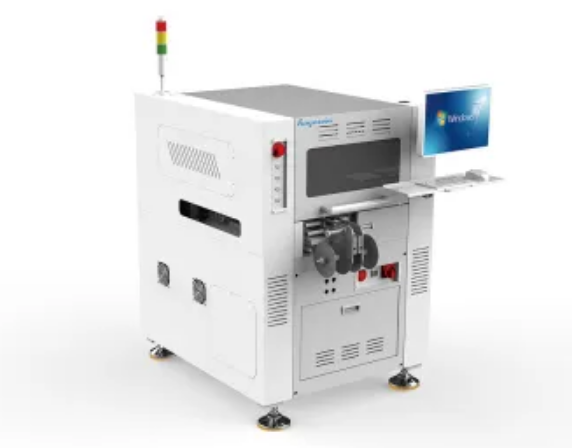How to Create the Best Printed Circuit Board (PCB) Labels
When choosing PCB label material, durability is paramount. It must withstand temperature fluctuations and resist moisture and chemicals. Polyester, polyimide, and vinyl are among the top choices due to their resilience.
Creating High-Quality Printed Circuit Board Labels Doesn’t Have to Be Difficult
Are you involved in the manufacturing of printed circuit boards (PCBs)? The choice of labels used is crucial for accurately identifying specific components, thereby aiding end consumers in better understanding and utilizing your product. However, face paint typically endure high temperatures, leading to rapid deterioration. Therefore, it's essential to comprehend the unique challenges faced by PCB labels to develop durable solutions. In this blog, we'll delve into the nuances of crafting top-notch PCB labels to optimize efficiency and reliability.

Long-Lasting PCB Labels Start with the Best Materials
The initial stage in producing resilient labels is selecting the highest quality materials available. This entails assessing the durability of the label, ink, and protective coating.
Assessing Label Material for Longevity
When choosing PCB label material, durability is paramount. It must withstand temperature fluctuations and resist moisture and chemicals. Polyester, polyimide, and vinyl are among the top choices due to their resilience.
Select Inks with Endurance in Mind
Inks must exhibit vividness, readability, and long-term durability. UV-cured inks are preferred for their resistance to fading and environmental factors. However, ensure any alternative inks selected can endure the specific environmental conditions your board will encounter.
Apply a Protective Coating
Applying a protective coating to your labels offers an additional layer of defense and durability. These coatings shield labels from moisture, dust, chemicals, and temperature fluctuations. By adding a coating, you can guarantee that the information they convey remains legible and valuable throughout the operational lifespan of the board.
Optimize Your Printing Process
After selecting the optimal materials for your labels, it's crucial to evaluate your printing process. Is it sufficiently optimized to yield the highest quality labels?
Keep Industry Standards in Mind
It's essential to consider the standards you'll need to adhere to. For instance, the electronics industry heavily relies on standardization. Adhering to industry labeling standards fosters consistency and ensures that your labels are compatible with different components and systems. Regardless of the industry, adopting standardized practices will help ensure that your labels contribute to the overall longevity of the system.
Embrace Thermal Transfer Printing
Thermal transfer printing produces sharp, high-quality, and durable labels. This method entails transferring ink from a ribbon onto the label through the application of heat. The resulting labels are highly resistant to smudging, scratching, and fading, thereby ensuring that essential information remains intact throughout the board's lifecycle.
Designing Effective PCB Labels
Creating effective PCB labels involves careful consideration of design elements to ensure clarity, readability, and durability. Some key principles to keep in mind include:
- Font Selection: Choose clear, legible fonts with appropriate sizes for the intended application. Avoid overly ornate or stylized fonts that may compromise readability.
- Contrast: Ensure sufficient contrast between the label text and background to enhance readability, especially under varying lighting conditions.
- Information Hierarchy: Organize label information hierarchically, with essential details such as component identifiers or warnings prioritized for easy identification.
- Graphic Symbols: Incorporate standardized graphic symbols and icons where applicable to convey information efficiently and universally.
- Protection: Consider adding a protective coating or encapsulation to PCB labels to enhance durability and resistance to environmental factors such as moisture, chemicals, or abrasion.
Quality Control and Testing
Prior to mass production, it's essential to conduct thorough quality control and testing of PCB labels to ensure compliance with specifications and standards. This may involve:
- Prototype Testing: Evaluate prototype labels for durability, legibility, and adherence to design requirements under simulated operating conditions.
- Environmental Testing: Subject labels to environmental tests such as temperature cycling, humidity exposure, or chemical resistance testing to assess their performance in real-world conditions.
- Functional Testing: Verify the functionality of labels in facilitating component identification, circuit tracing, and maintenance procedures.
Conclusion
Creating the best PCB labels requires attention to detail, adherence to best practices, and consideration of specific application requirements. By choosing the right labeling method, designing effective labels, and conducting thorough quality control and testing, manufacturers can ensure the clarity, durability, and functionality of PCB labels in electronic devices. For assistance with PCB labeling solutions or to find a reliable supplier, contact us today.
